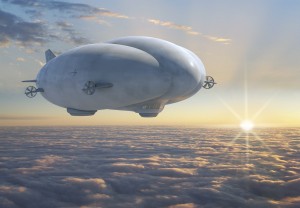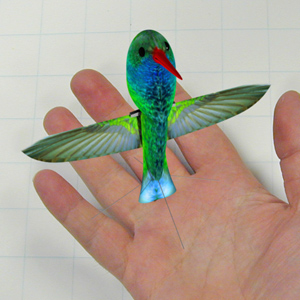Little, Big
Size matters. (Well, at least in the surveillance world.)And three projects under way take dimensions to whole new lengths. The LEMV (it stands for Long Endurance Multi-Intelligence Vehicle) is a mammoth hybrid airship championed by the U.S. Army as part of a future fleet of reconnaissance vehicles…

Size matters. (Well, at least in the surveillance world.)
And three projects under way take dimensions to whole new lengths. The LEMV (it stands for Long Endurance Multi-Intelligence Vehicle) is a mammoth hybrid airship championed by the U.S. Army as part of a future fleet of reconnaissance vehicles. As required in the U.S. Army's LEMV proposal request, the non-rigid autonomous airship must be able to operate at 20,000 feet above sea level, have a 2,000-mile radius, and remain deployed for 21 days.
The 250-foot-long airship will be able to house a 5,000-pound payload of radar and motion-imagery sensors, in addition to other spyware. While the LEMV has yet to be built—Lockheed Martin is one possible airframe supplier—the buoyant behemoth is expected to deploy to Afghanistan within 18 months.

On the other end of the spectrum is AeroVironment’s NAV (Nano Air Vehicle) “Mercury,” which weighs less than an ounce. Mercury mimics a bird in flight with its ability to climb and descend vertically—as well as fly sideways and backwards—and is part of a new class of small remote-controlled gadgets able to fly indoors and gather intelligence in urban settings.
Lockheed Martin's NAV, based on a maple seed, is in the second stage of testing. As we reported in 2006, Lockheed Martin hopes that soldiers will be able to carry the NAV in their pockets, and use the technology to photograph cave interiors, or to see what's lurking down a blind alley.

According to Jill Krugman, a public affairs officer with Lockheed Martin, DARPA stopped funding the project at the conclusion of phase one. But the company felt development should continue, and the corporation has been funding the project through Independent Research and Design (IRAD). "Through IRAD," says Krugman, "the team developed the approximately 30" SAMARAI as a technology demonstrator." (View a YouTube video of the 30" prototype here.) As the project progresses, the team will build increasingly smaller versions, based upon what they learn during testing.
